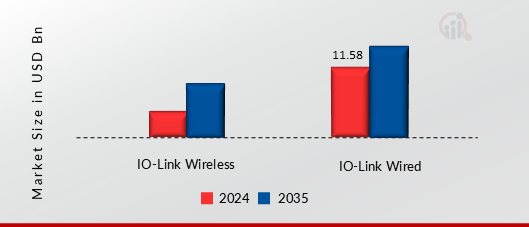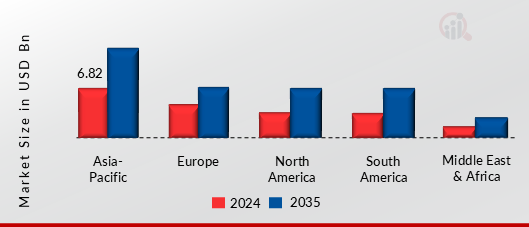Io Link Size
IO Link Market Growth Projections and Opportunities
The IO-Link market, a dynamic and rapidly evolving sector, is influenced by a myriad of market factors that collectively shape its growth and trajectory. One pivotal factor is technological advancement. As industries increasingly adopt automation and Industry 4.0 practices, the demand for IO-Link technology rises. IO-Link, with its ability to facilitate seamless communication between sensors, actuators, and controllers, becomes an integral part of the industrial landscape. The market is also significantly impacted by the ongoing digital transformation across various sectors, compelling businesses to embrace intelligent and connected solutions, where IO-Link plays a crucial role.
Another key factor driving the IO-Link market is the emphasis on efficiency and productivity. Industries are constantly seeking ways to optimize their operations, reduce downtime, and enhance overall efficiency. IO-Link enables real-time data exchange and diagnostics, empowering organizations to monitor and control their processes with greater precision. The promise of improved operational efficiency acts as a compelling incentive for businesses to invest in IO-Link technology.
Cost considerations also play a pivotal role in shaping the IO-Link market. The technology offers a cost-effective solution for integrating and connecting devices in industrial settings. Its versatility allows for easy integration into existing systems, minimizing the need for extensive overhauls. As companies look for budget-friendly yet advanced solutions, the cost-effectiveness of IO-Link becomes a significant market factor.
The global nature of industries today contributes to the market dynamics of IO-Link. As businesses expand globally, there is a growing need for standardized communication protocols. IO-Link's international acceptance and standardization by organizations like the International Electrotechnical Commission (IEC) position it as a preferred choice for companies operating on a global scale. This factor not only drives the adoption of IO-Link but also fosters interoperability, ensuring seamless communication across diverse industrial environments.
Market factors are also influenced by regulatory and compliance requirements. As industries face increasing scrutiny in terms of safety and environmental standards, IO-Link's ability to contribute to compliance becomes a valuable asset. The technology facilitates the implementation of safety measures and environmental monitoring, aligning with stringent regulations. Companies looking to adhere to these standards are inclined towards incorporating IO-Link into their systems.
The competitive landscape is yet another aspect shaping the IO-Link market. With various players vying for market share, innovation becomes a critical factor. Companies strive to differentiate themselves by introducing advanced features and capabilities in their IO-Link offerings. This competition fosters continuous improvement and the development of more sophisticated IO-Link solutions, ultimately benefiting end-users.
Market factors are also intertwined with the overall economic climate. Economic fluctuations, such as recessions or periods of growth, impact businesses' investment decisions. During economic downturns, cost-effectiveness becomes even more crucial, driving the adoption of technologies like IO-Link that offer efficiency gains without substantial financial commitments. Conversely, in periods of economic prosperity, industries are more willing to invest in cutting-edge technologies, further propelling the IO-Link market forward.





Leave a Comment